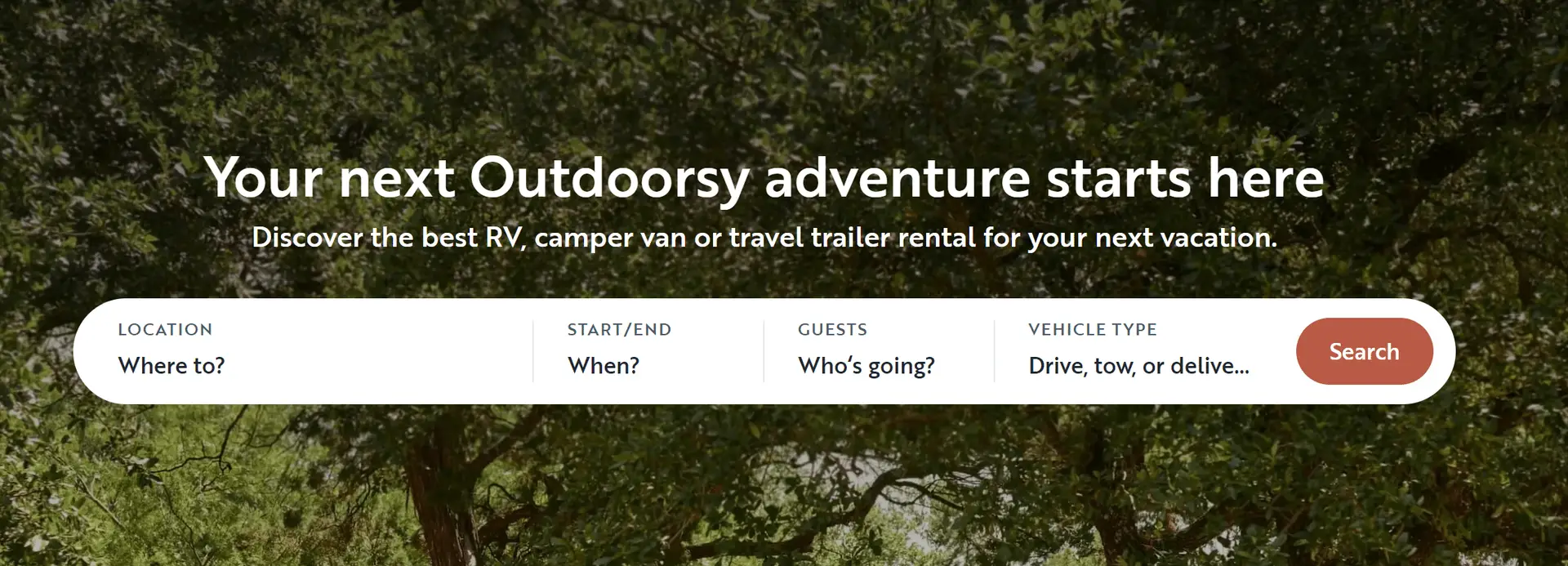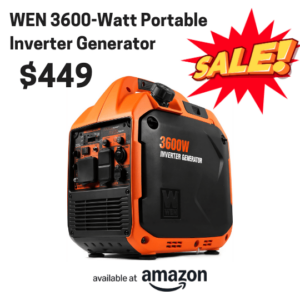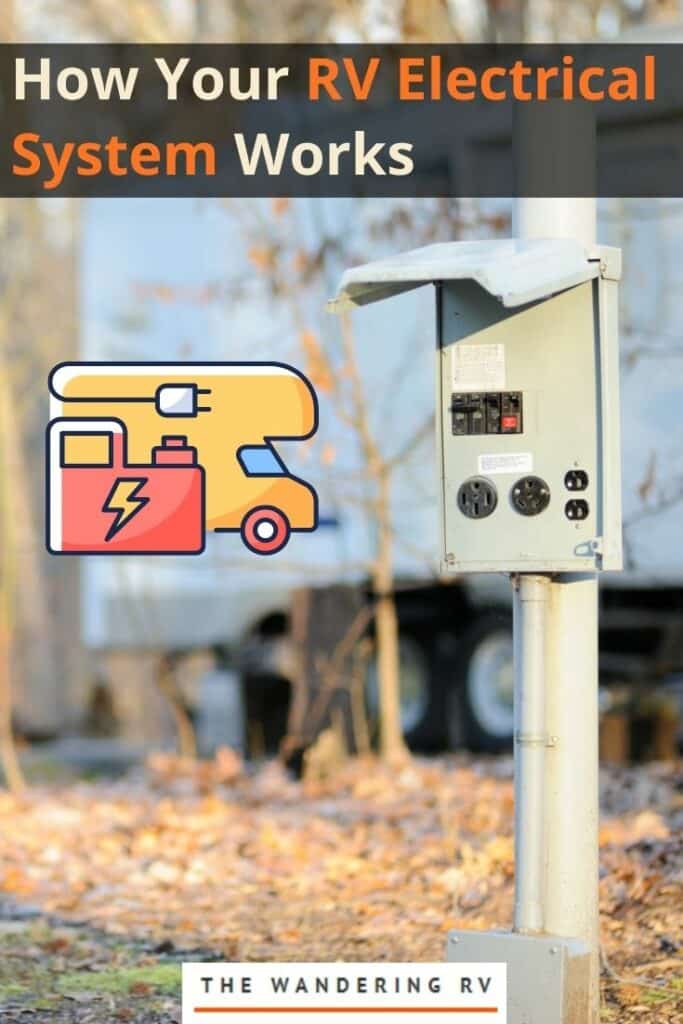
So you’re ready to go on an RV adventure, but you need to know how the electricity works?
The RV world can seem a bit intimidating, but it doesn’t have to be! With this guide, we’ll give you the basics about how your RV electrical system works and how to operate it safely.
We’ll also discuss the difference between a 30 amp plug and 50 amp plug, deep-cycle batteries, shore power options that are available at campgrounds, and boondocking or dry camping tips.
Let’s dive in!
Table of Contents
- The Three RV Electrical Systems in Every Rig
- 30 Amp vs 50 Amp RVs
- RV Electrical System Power Sources
- Understanding Your Circuit Breaker & Fuses
- Electricity vs Propane
- Surge Protectors
- Frequently Asked Questions
- Before you go…
The Three RV Electrical Systems in Every Rig
First, let’s talk about RV electrical systems. You have three separate electrical systems that you’ll need to know for your rig. They are:
- 12 Volt DC Automotive System
- 12 Volt DC Coach System
- 120 Volt AC Coach System
AC power (Alternating Current) and DC power (Direct Current) are the two types of electrical currents used in an RV electrical system. AC power is similar to the electricity in your home, and DC power is similar to the electricity in your car.
Here’s a visual representation of how it all works:
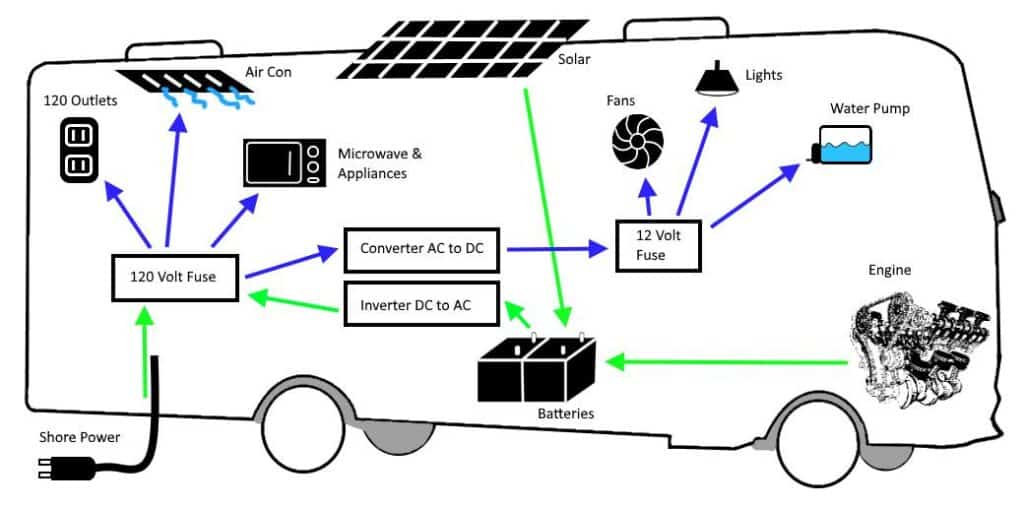
Now let me explain.
1. 12 Volt DC Automotive System
An automotive system is the type of power that comes out of a 12 volt outlet in your car to keep your phone charged, power the radio, charge batteries, etc. It powers the driving area of your RV, and gets power from the engine while driving or from an AC to DC converter while plugged into shore power at a campground.
2. 12 Volt DC Coach System
Your RV has a separate coach system, which is also 12 volts DC, but it can reach the living area of your RV. It’s powered by a battery (or multiple batteries) and powers your 12 volt appliances, such as a coffee maker, blender, curling iron, etc.
The 12-volt system also powers everything from the start-up on your water heater, furnace, and refrigerator to most of the lights in your RV’s living area, your water pump, your carbon monoxide detector, and a variety of other devices.
3. 120 Volt AC Coach System
If an appliance requires 120 volts AC (like your RV air conditioner), it won’t work with the 12 volt systems. The 120 volt AC system is what powers your air conditioner, microwave, refrigerator, and other large electronic devices.
The 120 volt AC power only works when plugged into shore power at a campground or when running a generator. This is where amperage comes in.
Related Post — 27 RV Upgrades & Mods You HAVE to See
30 Amp vs 50 Amp RVs
There are two different types of plugs at RV campgrounds: 30 amp and 50 amp. Most RVers will have a 30 amp rig, but if you have a 50 amp rig, it means your RV can pull more power from the campground.
You can tell which you have by looking at your RV power cord.
30 Amps
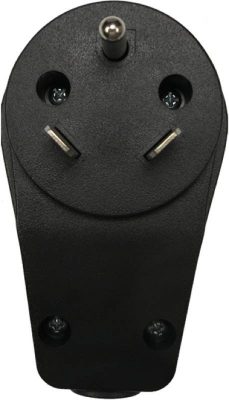
A 30 amp plug (pictured above) is thinner than a 50 amp plug and has three prongs instead of four. You can only pull 30 amps from a 30 amp plug, and if you try to pull more than that it will trip the breaker in your RV.
50 Amps
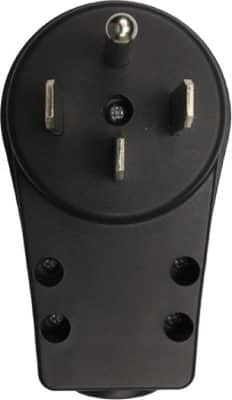
A 50 amp plug (pictured above) is thicker and has four prongs instead of three. With this type of plug, you can draw up to 50 amps without tripping any breakers or fuses.
Amp Adapter Plugs
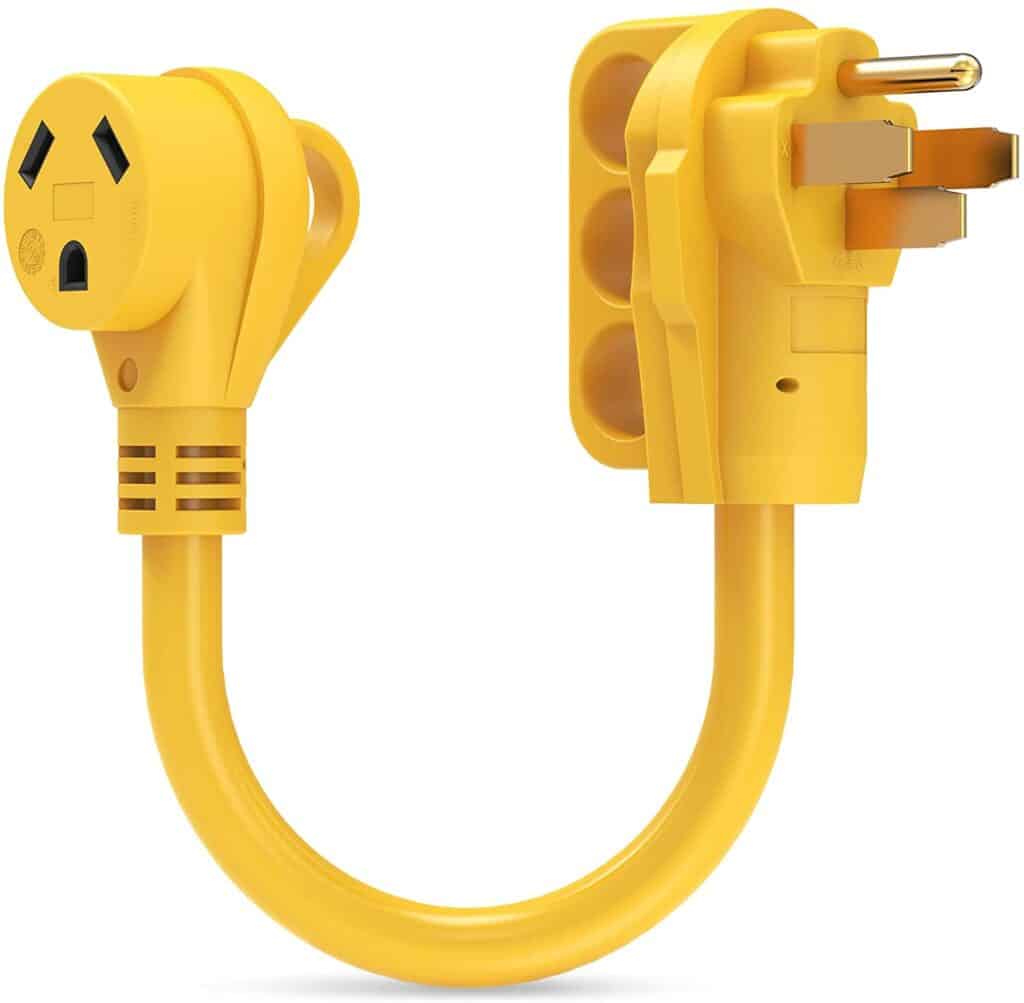
If you have a 30 amp RV and want to use a 50 amp outlet or vice-versa, you’ll need an amp converter plug. This is a special adapter that takes the three prongs of a 30 amp plug and converts it into a four-pronged 50 amp plug.
RV Electrical System Power Sources
Now that we know a little more about RV electrical systems, let’s talk about the different ways to get power while camping.
Shore Power at Campgrounds
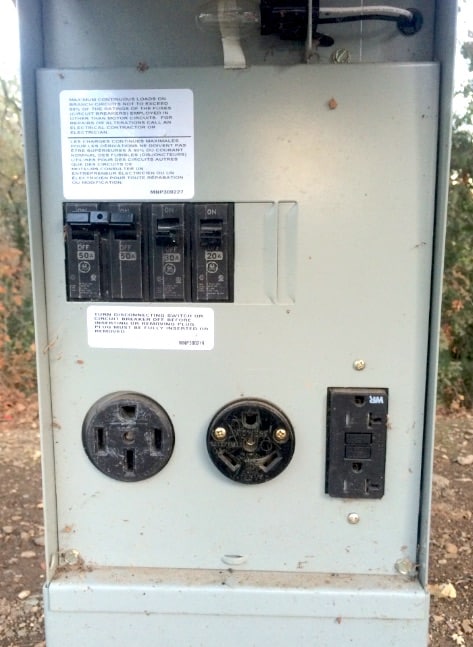
When you’re plugged into shore power at a campground or home, your RV is getting its electricity from an external source – usually a large box on the ground near your campsite. This is called a pedestal, and it has three types of electrical outlets in it: a 30 amp plug, a 50 amp plug, and a 120 volt AC outlet.
When plugged into shore power, you can use as much electricity as you’d like. However, keep in mind that some campgrounds charge for energy use. So look out for that when booking your campground!
Typically, campground electrical pedestals have a circuit breaker on them. If you’re plugged in and the power isn’t working, check this first!
RV Batteries
If you’re boondocking or dry camping, you won’t have access to shore power. This means your RV will need to generate its own electricity.
One way to do this is with battery power. RV batteries are deep-cycle and can be charged up and used to power your 12 volt RV appliances. Your batteries can be charged by the vehicles alternator while driving or by any of the other power sources on this list.
Your battery power can also power your devices while driving or during pit stops on the way to your campground.
Keep in mind that some older RVs still use lead acid batteries, which need more regular maintenance than modern deep cycle batteries. If you don’t know how to maintain your battery, make sure you get it serviced by a professional at least once a year.
RV Generators
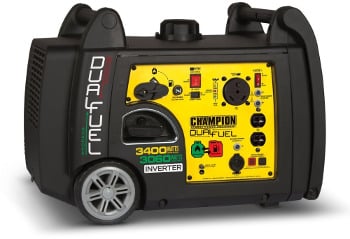
Generators are similar to RV shore power in that they connect to your AC system and provide AC power. Although they don’t generally offer as much electrical power as shore power, this depends on the size of the generator.
RV generators are measured in watts instead of amps. For a small RV or if you don’t need to operate major systems like air conditioning, a 1000-watt generator is sufficient. A 3500-watt generator is the next level up and can run most appliances on most RVs.
Overdrawing a generator is not as dangerous as overdrawing shore power. If you attempt to overdraw a generator, you simply won’t get enough power to run everything. Overloading your generator has the potential to destroy some appliances, but it is unlikely.
Some motorhomes come with a built-in generator, which is located in an outside bay and is separate from the main engine. These are particularly useful because they are insulated, so they are protected and not as noisy as an external generator.
External generators are not permitted during quiet hours, especially after dark. NEVER use external generators indoors as they create a lot of carbon monoxide gas and can kill you very quickly if used in an enclosed space.
Solar Power
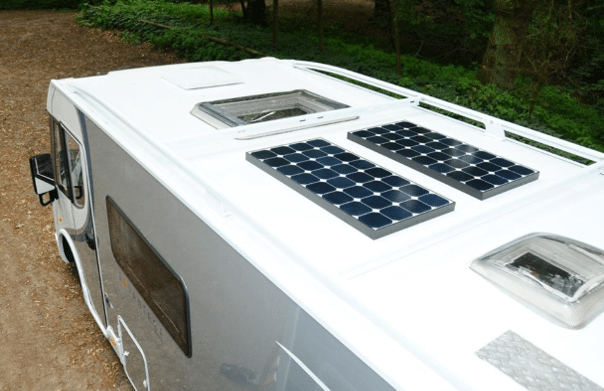
Another option to supply power to your RV is solar panels. Solar power uses the sun’s energy to create electricity, which can then be used to power your RV.
Solar power is a great option if you’re boondocking or dry camping because they don’t require any cords or connections. You just need to find a spot for the solar panels on your RV and install them!
Keep in mind that solar panels will only work when the sun is out. So if you’re camping in an area with a lot of overcast, your solar panels won’t be very useful.
Also, solar panels can only be used to create DC power. So you still can’t use solar to power larger 120-volt devices like your fridge or air conditioner.
Understanding Your Circuit Breaker & Fuses
It’s important to familiarize yourself with your RVs circuit breaker or fuse panel!
Circuit breakers protect things like shore power connections and sometimes AC appliances (for example, if they’re too heavy for a standard fuse). If something gets overloaded, the breaker will trip and turn off the power. This is a safety measure to prevent an electrical fire.
Breakers are usually reset by flipping a switch. If your power suddenly shuts off, this is the first thing you should check.
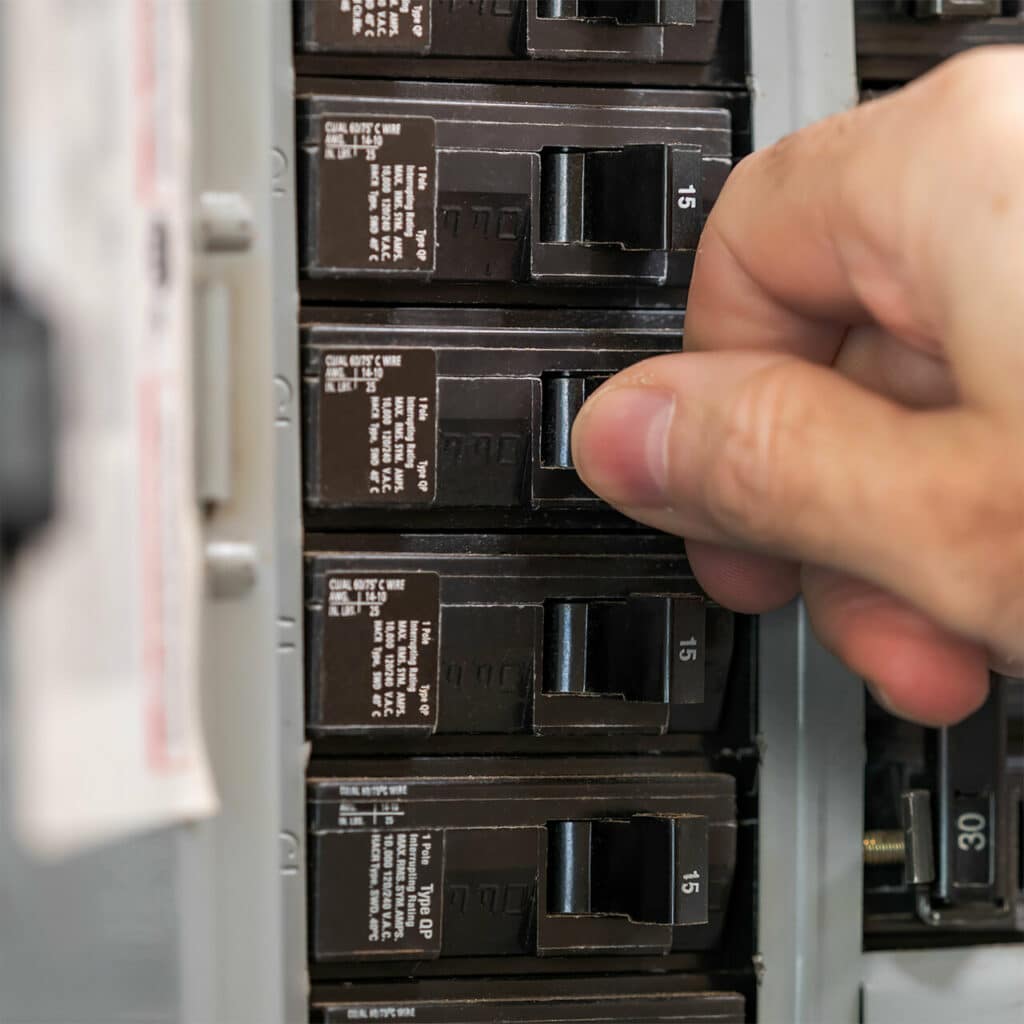
Fuses protect smaller appliances and lights. They work by blowing out when they get too hot, which then stops the flow of electricity. Fuses can be replaced if they blow, while circuit breakers cannot.
It’s a good idea to keep a few spare fuses on hand in case one blows!
Electricity vs Propane
Your RV may have appliances that run on either electricity or propane. Many heaters, water heaters, and RV refrigerators can operate on either power source.
If you’re connected to RV shore power, you should use the electricity option — or a hybrid electric and propane option if you have a hybrid system.
If you’re boondocking or camping off the grid, use the propane option. It just depends on what you have access to at the time.
Surge Protectors
A surge protector is a device that protects your RV from electrical surges. Surges can come from things like lightning or too much power being drawn at once.
Some RVs have built-in surge protectors, but if yours doesn’t, it’s a good idea to buy an external RV surge protector just to be safe.
Related Post — 50+ Must-Have RV Accessories
Frequently Asked Questions
Here are a few common questions we hear about RV electrical systems:
What size generator do you need for a 50 amp RV?
A 50 amp shore power connection on an RV generally has two individual 50 amp feeds. A 50 amp RV with a 120 V electrical supply can handle up to 12,000 watts of electricity.
This means a 12,000 watt or 12,500 watt generator is your best choice to supply all the power you could need. However, at a minimum, you need at least a 3,500 watt generator.
Typically, the roof air conditioner takes the most power and is what you’ll need a generator to run, so look up how much power yours consumes before you buy a generator. Click here to read more about RV generators.
Should I disconnect my RV battery when plugged in to shore power?
If you have an automatic battery charger, it will automatically disconnect the house batteries from shore power when they are fully charged.
However, if you don’t have an automatic charger or your RV is plugged into AC power only (no DC feed), then yes — disconnecting the batteries will keep them at full charge and ensure there isn’t any parasitic drain on your RV battery.
The battery disconnect switch is typically found just inside the door to your RV, but refer to your owners manual for the exact location.
When I plug my AC into shore power, it makes a buzzing sound. What’s happening?
If you hear an audible buzz when your AC is plugged in to the 120 V outlet on your RV, there may be too much voltage flowing through that circuit and tripping a breaker inside your panel box. This typically happens with newer RVs because the wiring is not properly sized.
If you’ve tried resetting your breaker and it still makes noise, check to make sure there isn’t a short somewhere in your AC system — like on an extension cord or inside of an appliance. If there’s no apparent problem with the equipment and everything seems to be wired correctly (including the AC outlet on the RV itself), you may need to get your electrician out for further inspection.
What is shore power?
Shore power, or pedestal power, is the term used for the electrical supply that’s available at an RV park. This is a 120 volt AC outlet that provides electricity to your RV.
Before you go…
Hopefully, now you have a basic understanding of your RV’s electrical system. RV electricity can seem complicated, but you are now equipped to keep your RV powered and running!
If you want to learn more about the RV electrical system, here’s a more in-depth article.
Here are some other articles you might be interested in:

